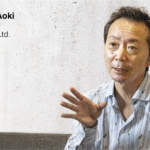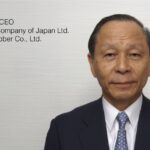We spoke to Shun Tsuji, president of Kishun Co., Ltd., to learn about Japan’ s used jewelry market, and his thoughts on ‘urban mines’.
事業内容 do you believe is the main reason that customers choose Japanese luxury goods over alternatives from other countries?
I think one thing that it boils down to is how specialized Japanese businesses are. All companies try to pursue a task like an art, similar to traditional activities such as martial arts. While Mikimoto deals with many kinds of jewelry, they are best known for their founding product; pearls. A similar thing can be said for other famous brands, such as Seiko. Without diversifying too much, they are able to foster a particular corporate culture and really appeal to customers.
Why do you believe Japan’s secondhand market has evolved to the current high level of today?
I think that we have experienced several waves of popularity in the secondhand goods market, however, the current boom is unprecedented. This could be due to economic factors; during the ‘bubble’ period we became accustomed to mass production and consumption, and now there is a large pool of inventory available on the market. Also, we are returning to the mentality of valuing older things and limiting the amount of waste produced.
Currently, the Japanese secondhand market is expected to increase to 4 trillion yen by 2030. Since childhood, we have always been told to value what we have, from toys that our grandparents bought us to the cars we purchase. Because of this mentality, the quality level of secondhand goods in Japan is excellent.
What is the basis behind your concept of ‘urban mines’, and how is it contributing to a more sustainable jewelry industry?
I have been in the jewelry industry for several decades, and in my previous work I found that certain gemstones were discarded in the secondhand market. While platinum and diamond retained value for the B2B market, we found that colored stones were often discarded, given that it was cheaper and easier to procure new ones.
I often pondered whether we could actually do something with these stones and bring out further value from them. This led me to form my current corporate vision, which eliminates the term ‘worthless’ from the world.









